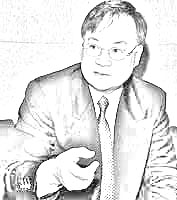 Lately, the rumors making the rounds for a few weeks ahead of a Camp David-like meeting, to propel the stagnation of peace negotiation process, has now poised to become a reality.
Lately, the rumors making the rounds for a few weeks ahead of a Camp David-like meeting, to propel the stagnation of peace negotiation process, has now poised to become a reality.
Reportedly, the unofficial gathering of the government, military or Tatmadaw and the Nationwide Ceasefire Agreement (NCA) signatory Ethnic Armed Organizations (EAOs) will take place somewhere in Poppa area, on 15 October 2018, the date of the third anniversary signing of NCA in Naypyitaw, during the tenure of President Thein Sein government.
“The proposal is Poppa area, in order to have some changes and freely (interact with each other), as Naypyitaw has not much breathing space. At the place (we) will be able to transparently, cordially discuss in unofficial manner,” said Hkun Okker, patron of the Pa-O National Liberation Organization (PNLO), according to the Radio Free Asia (RFA) report of October 5.
While all NCA-signatory EAOs have consented to be there at Poppa, already on October 2, the Restoration Council of Shan State (RCSS) boss participation is not yet confirmed, said the report.
The move is welcomed by many, including the stakeholders, observers and activists.
Prominent ethnic political leader Sai Nyunt Lwin of Shan Nationalities League for Democracy (SNLD) and Ko Mya Aye of 88 generation also chipped in their support for such gathering, saying the meeting of first line decision-makers could be good to uplift the stagnation of peace process, since the NLD came to power two and a half years ago, said the RFA.
Ko Mya Aye emphasized that he understood that the meeting is to find ways on how a federal democratic union could be established.
Saw Nay Htoo Vice-Chairman of Karen Organization of the United States of America (KOUSA) also echoed the same but with cautious optimism, while the Kachin Alliance Chairman Gam San is somewhat doubtful on the development, saying that he believed that this gathering is just a political ploy, reported the RFA on October 6.
“I see this as a political move to overcome the international pressure. As it is a political maneuver like playing chess, it will be releasing and tightening the situation alternatively in order to lessen the international pressure, to employ a condition of indecisive political atmosphere to buy time. I don’t believe that it is for the sake of peace.”
Regarding the issue of having one national army, Gam San said: “To be able to become one army, it is important not to be led by one (particular) ethnic group and one type of religious membership.”
“The ethnic nationalities want an army that is equal. Now if you look at the situation, the top twenty (officers) are ethnically from the same ethnic group and religion-wise also from the same one (meaning: the Bamar ethnic group domination the army),” added Gam San.
He pointed out the ethnic nationalities are not satisfied with just being border guard forces and people’s militia, but want to be part of a federal army in tune with the federal union.
“We have problems here. And another point is there is still no promise (commitment) that the Tatmadaw absolutely want to establish a federal union,” stressed Gam San.
Meanwhile, according to 7 Day Daily report of October 6, KNU Vice-Chairman Padoh Kwe Htoo Win said: “Now (we) have made a proposal for the coming (participation) of NCA-non-signatory EAOs. We still haven’t got the agreement. This is because as the meeting is unofficial and the its Peace Process Steering Team (PPST) also have the kind of opinion that non-signatories should be involved.”

Outlook and perspective
To sum up, while the core themes are “non-secession” and “one national army”, the real crucial points in order to bring us further are, none other than, the adjustment of conceptual agreement on the formation of the Union of Burma in 1948 and “political will” to treat each other as equal so that peaceful co-existence and co-habitation will be achievable.
The conceptual differences of 1948 Union of Burma formation is that, while the ethnic nationalities still believe and adhere that the newly formed political entity stems from the virtue of 1947 Panglong Agreement – the only legal bond between the Bamar and ethnic states – and 1947 Union of Burma Constitution, the present Bamar political elite and the military propagated and believe that it stems from the Burmese empire from time immemorial. In other words, non-Bamar areas have always been part of Burma and they are only retaking them back when the British colonial master left in 1948.
This must first be resolved and digested in order to move forward. And if this is satisfactorily agreed upon, the issue of “non- secession” will also become a non-issue. As the fact that the 1948 Union of Burma is the product stemming from “voluntary union” and the aftermath of 1962 military coup, which nullified the Panglong Agreement and the Union of Burma Constitution effectively aborted the union. In other words, there is no Burma or Myanmar in a legal sense and what we are unconsciously accepting it as a country is, in fact, a “forced union” through military might, against the will of the non-Bamar ethnic nationalities.
In short, there is no need to secure the non-secession promise, as if the ethnic nationalities are for secession, they won’t be negotiating and won’t agree to the “non-disintegration” of the union written in the NCA.
In the same vein, the one national army can also be ironed out, if the government and Tatmadaw are really ready to be on equal-footing with all the other ethnic nationalities, correspondingly implementing the values of altruism with determined “political will”.
As such, the success and failure of the Poppa gathering will largely depend on the bridging of such conceptual differences.



